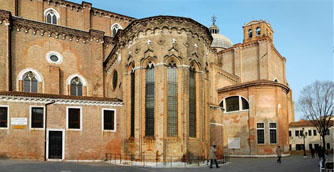Queen of the Adriatic
Venice is a city in northern Italy, the capital of region Veneto, and has a population of 271,251. Together with Padua, the city is included in the Padua-Venice Metropolitan Area (population 1,600,000). Venice's nicknames include "Queen of the Adriatic", "City of Water", "City of Bridges", and "The City of Light". The city stretches across numerous small islands in the marshy Venetian Lagoon along the Adriatic Sea in northeast Italy. The saltwater lagoon stretches along the shoreline between the mouths of the Po (south) and the Piave (north) Rivers. The population estimate of 272,000 inhabitants includes the population of the whole Comune of Venezia; around 62,000 in the historic city of Venice (Centro storico); 176,000 in Terraferma (literally firm land, the areas outside the lagoon), mostly in the large frazione of Mestre and Marghera; and 31,000 live on other islands in the lagoon.
When To Go

It's almost always high season in Venice, although the city is busiest in spring (Easter-June) and Sept-Oct. Accommodation can be hard to find then, as well as around Christmas, New Year and Carnevale (February). Like Italy's other great tourist hubs, Venice is at its worst in high summer (June-August): it's crowded, oppressively hot and sticky. The most pleasant time of year to visit is late March into May, with clear spring days and comparatively fewer crowds. September is the next best in terms of weather, but October is quieter. Flooding occurs in November and December, and winter can be unpleasantly cold - although seeing Venice under snow can be the stuff of fairy tales. The Venetian Republic was a major sea power and a staging area for the Crusades, as well as a very important center of commerce and art in the Renaissance. The city-state lost much of its power and importance due to the decline and fall of the Byzantine Empire, which Venice helped to destroy. This was because Turkish control of the Eastern Mediterranean gave the European maritime powers an incentive to find trade routes elsewhere.
